Thursday, November 12, 2009
'Stellar Nurseries'
The findings show that "stellar nurseries" within the first galaxies gave birth to stars at a much more rapid rate than previously expected, the researchers from Durham's Institute for Computational Cosmology revealed.
The research looked back 12.5 billion years to one of the most distant known galaxies, about one billion years after the Big Bang.
Using a technique called gravitational lensing -- where distant galaxies are magnified using the gravity of a nearby galaxy cluster -- the scientists observed the rapid bursts of star formation in the galaxy called MS1358arc.
Within the star-forming regions, new stars were being created at a rate of about 50 stars per year -- around 100 times faster than had been previously thought.
The researchers, who say their work represents the most detailed study of a galaxy at such a young age, believe the observed galaxy is typical of others in the early Universe.
They say the galaxy, which measures 6,000 light years across, also has all the characteristics that would allow it to eventually evolve into a galaxy such as our Milky Way, giving an insight into how our sun and galaxy formed.
The Durham researchers based their findings on observations from the Gemini North telescope, based in Hawaii, and NASA's Hubble and Spitzer Space Telescopes. The research appears in the Monthly Notices of the Royal Astronomical Society. The research was funded by the Royal Astronomical Society.
Lead author Dr Mark Swinbank, in the Institute for Computational Cosmology, at Durham University, said: "The runaway effect in this galaxy suggests it is growing much faster than expected.
"Given the size of the star forming regions, we would expect it to be forming stars at the rate of about one sun per year, but it seems to be much more active than that.
"We think this galaxy is fairly typical of galaxies at this time and we expect that the Milky Way once looked like this as it formed its first stars.
"In effect we are seeing the first generation of stars being born in a galaxy like the Milky Way. This gives unique insight into the birth of our own galaxy."
The researchers say most of the observed stars eventually exploded as supernovae, spewing debris back into space where it formed into new stars
Dr Swinbank added: "In this respect these stars are the seeds of future star formation in the Universe."
Royal Astronomical Society President Professor Andy Fabian said: "It is exciting to see such a detailed picture of a very distant galaxy.
"This pioneering work shows what our own galaxy might have looked like when it was a tenth of its present age."
Saturday, November 7, 2009
Friday, October 2, 2009
NASA CRASH THE MOON??
"The cross team concluded that Cabeus provided the best change for meeting its mission goas," mission managers said in a statement. The news comes less that a week after scientists announced the discovery of water on the moon in the form of water molecules bound to the lunar dirt.
Cabeus is a large crater about 60 miles (98 km) in diameter that sits at 84.0 degree south, 35.5 degrees west at the moon's south pole. It has two nearby satellite craters: the 25-mile (40 km) wide Cabeus A and Cabeus B, which is about 38 miles (61 km) in diameter. The cross probe, officially called the lunar Crater Observation and Sensing Satellite, is a pair of vehicles headed for one of the most watched cosmic collisions.
Friday, September 11, 2009
Nanotechnology
N
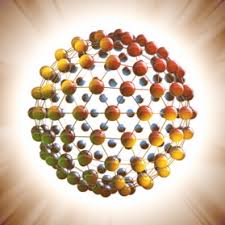 anotechnology refers broadly to field of applied science and technology whose unifying theme is the control of matter on the molecular level in scales smaller than 1 micrometre, normally 1 to 100 nanometers, and the fabrication of devices within that size range. It is a highly multidisciplinary field, drawing from fields such as applied physics, materials science, colloidal science, device physics, supermolecular chemistry, and even mechanical and electrical engineering.
anotechnology refers broadly to field of applied science and technology whose unifying theme is the control of matter on the molecular level in scales smaller than 1 micrometre, normally 1 to 100 nanometers, and the fabrication of devices within that size range. It is a highly multidisciplinary field, drawing from fields such as applied physics, materials science, colloidal science, device physics, supermolecular chemistry, and even mechanical and electrical engineering.Much speculation exists as to what new science and technology may result from these lines of research. Nanotechnology can be seen as an extension of existing sciences into the nanoscale, or as a recasting of existing sciences using a newer, more modern them. Two main approaches are used in nanotechnology. In the "bottom-up" approach, materials and devices are built from molecular components which assemble themselves chemically by principles of molecular recognition. In the "top-down"approach, nono-objects are constructed from larger entities without atomic-level control.
The impetus for nanotechnology comes from a renewed interest in colloidal science, coupled with a new generation of analytical tools such as the atomic force microscope (AFM), and the scanning tunneling microscope (STM). Combined with refined processes such as electron beam lithography and molecular beam epitaxy, these instruments allow the deliberate manipulation of nanostructures, and led to the observation of novel phenomena.
Despite the great promise of numerous nanotechnologies such as quantum dots an nonotubes, real commercial applications have mainly used the advantage of colloidal nanoparticles in bulk from, such as suntan lotion, cosmetics, protective coatings, and stain resistant clothing. Modern synthetic chemistry has reached the point where it is possible to prepare small molecules to almost any structure.
These methods are used today to produce a wide variety of useful chemical such as pharmaceuticals or commercial polymers. The abillity raises thequestion of extending this kind of control to the next-larger level, seeking methods to assemble these single molecules into supramolecular assemblies consisting of many molecules arranged in a well defined manner. These approaches utilize the concepts of molecular self-assembly and/or supramolecular chemistry to automatically arrange themselves into some useful conformation through a bottom-up approach.
Monday, September 7, 2009
UFO found in China
 entist claim they filmed an unidentified flying object (UFO) for about 40 minutes, during the solar eclipse on July 22. Researchers at the Purple Mountain Observatory in Nanjing have said that they will spend the next 12 months studying the footage before reaching any conclusions.
entist claim they filmed an unidentified flying object (UFO) for about 40 minutes, during the solar eclipse on July 22. Researchers at the Purple Mountain Observatory in Nanjing have said that they will spend the next 12 months studying the footage before reaching any conclusions.In an interview with sina.com, Ji hai-sheng, the director of the observatory, said that scientists would not be speculating publicly on the nature of what was captured on film until it had been properly studied. "Purple Mountain Observatory and Chinese Academy of Sciences said that during the July 22 total solar eclipse observation, China had discovered near the sun an unidentified object and its physical nature remains to be further studied," the Telegraph quoted him as saying.
"Currently manpower is being organised to deal with this data, complete the data a
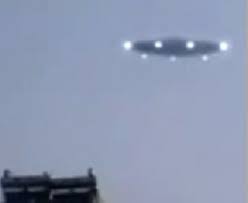 nalysis and reveal the scientific result and this will take at least one year's time to finalise," he added.
nalysis and reveal the scientific result and this will take at least one year's time to finalise," he added.The incident comes after a series of UFO sighting i China, which led to the object being filmed by students in Diqing.
Chandrayaan I
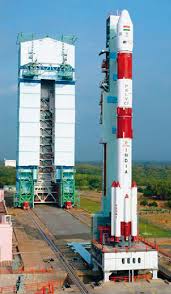 ndrayaan II is now in the offing, as Dr. K. Kasturirangan, former ISro Chief, has stated that even with the failed previous moon mission, much technology and scientific gains have been achieved for the successful launch of second such satellite by India. Claiming that Chandrayaan-I was a successful mission, the scientist-turned policymaker said, it helped mapping 50 per cent of the moon surface and 90 per cent of the mineralogy of the celestial body.
ndrayaan II is now in the offing, as Dr. K. Kasturirangan, former ISro Chief, has stated that even with the failed previous moon mission, much technology and scientific gains have been achieved for the successful launch of second such satellite by India. Claiming that Chandrayaan-I was a successful mission, the scientist-turned policymaker said, it helped mapping 50 per cent of the moon surface and 90 per cent of the mineralogy of the celestial body.Dr. Kasturirangan was of the view that the mission was complete as far as infrared coverage and radiation monitoring dosage was concerned. For the first time a satellite cold come as low as 100 km from the moon surface, he said, adding that the earlier missions could reach up to 200km. "This gave us the opportunity to monitory every aspect of the moon surface," he said. Even the failed mission gave scientists substantial knowledge to take corrective steps for the next mission target the broadest of achievements.
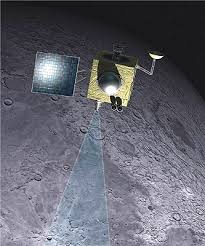
Dr. Kasturirangan, however, claimed that the quality of imagery gathered from Chandrayaan-I is comparable with best in the world so far achieved. "In a period of 5 to 10 years the country has a plan to go aggressively in space sciences, Altogether 30 small satellites are in the pipe line and one or tow large satellites are in the process of launch," Dr Kasturirangan said.
The proposal to send this mission was approved by the government in November 2003 and abut Rs. 386 crores was spend on the mission from the conception to the execution stage. The design life of this spacecraft was two years, meaning it was expected to remain in the orbit at least up to October 2010
Saturday, September 5, 2009
Black Box
On January 3 1, 2000, Alaska Airlines Flight 261 departed Puerto Vallarta,Mexico, heading for Seattle, WA, with a short stop scheduled in San Francisco, CA. Approximately one hour and 45 minutes into the flight, a problem was reported with the plane's stabilizer trim. After a 10-minute battle to keep the plane airborne, it plunged into the Pacific Ocean off the coast of California. All 88 people on board were killed.
1, 2000, Alaska Airlines Flight 261 departed Puerto Vallarta,Mexico, heading for Seattle, WA, with a short stop scheduled in San Francisco, CA. Approximately one hour and 45 minutes into the flight, a problem was reported with the plane's stabilizer trim. After a 10-minute battle to keep the plane airborne, it plunged into the Pacific Ocean off the coast of California. All 88 people on board were killed.
With any airplane crash, there are many unanswered questions as to what brought the plane down. Investigators turn to the airplane's flight data recorder (FDR) and cockpit voice recorder (CVR) also known as "black boxes," for answers. In Flight 261, the FDR contained 48 parameters of flight data, and the CVR a little more than 30 minutes of conversation and other audible cockpit noises.
Like that only Andhrapradesh (India) Chief Minsters death mystery also will be know after decoding black box which is with Investigation team. The Karnool District officials surrender the Black box and cockpit voice recorder to Investigation team. Results will be know after two three days.
NEW TREATMENT FOR OVARIAN CANCER

In the future, women with metastatic ovarian cancer could be treated with a radioactive substance that can seek and destroy tumour cells. An initial study in patients conducted jointly by the Sahlgrenska Academy at the University of Gothenburg and Sahlgrenska University Hospital has found that the treatment has no unwanted side-effects.
Our research team has long hoped to be able to target radiotherapy in this way," says oncologist Håkan Andersson from Sahlgrenska University Hospital, who is leading the research alongside professor Ragnar Hultborn from the Sahlgrenska Academy and radiation physicist Lars Jacobsson.
"There is a good chance of this treatment working, as the study indicates that a sufficient amount of the active substance reaches the tumour cells in the abdominal cavity without any measurable side-effects."The aim of this initial patient study, just published in the Journal of Nuclear Medicine, was to study the substance's distribution in the body and any side-effects in nine women with ovarian cancer.
The new treatment has been developed jointly over a number of years by researchers at the Sahlgrenska Academy and Sahlgrenska University Hospital. The treatment entails injecting the patient with a radioactive isotope bound to carrier molecules. This complex has the ability to bind to structures on the surface of tumour cells where the isotope emits alpha particles with such a short range that only the very nearest tumour cells' DNA is destroyed. The injection is administered straight into the abdominal cavity.
"We have previously seen that mice with ovarian cancer given this treatment are gene
 rally cured without serious side-effects, so we hope that this will become an established and effective treatment for women with metastatic ovarian cancer," says Ragnar Hultborn, professor of oncology at the University of Gothenburg's Sahlgrenska Academy. "But it will still be several years of development."
rally cured without serious side-effects, so we hope that this will become an established and effective treatment for women with metastatic ovarian cancer," says Ragnar Hultborn, professor of oncology at the University of Gothenburg's Sahlgrenska Academy. "But it will still be several years of development."The research is being funded partly by the Swedish Research Council and the Swedish Cancer Society.
"In our next study, 80 women with ovarian cancer will receive this treatment as a supplement to their ordinary treatment so that we can scientifically test whether the effect is as good in real patients as the animal studies indicate," Håkan Andersson says.
Friday, September 4, 2009
NASA Cleared space junk at ISS
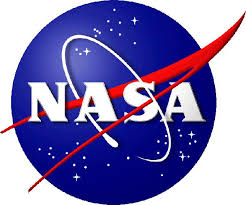 rnational space might to fire its thrusters to avoid a piece of space junk that could pass within two miles of the orbiting complex and its 13 astronauts, NASA said on Wednesday.
rnational space might to fire its thrusters to avoid a piece of space junk that could pass within two miles of the orbiting complex and its 13 astronauts, NASA said on Wednesday.The United States agency is tracking debris from a portion of a European rocket, the Ariane 5, that was launched more than three years ago. The debris could pass close enough to require astronauts to fire thrusters to move the station and special discovery that is docked there out of the way, NASA officials said at a briefing.
The debris, which is in an oval-shaped orbit that makes it difficult to track, will make its closest approach to the station at 11:06 a.m. EDT (3:06 p.m. GMT) on Friday, NASA said.
The debris will not force NASA to delay the second of three spacewalks planned outside the station on Thursday. NASA might decide to take no action, or could "reboost" the station from its current orbit 220 miles above the Earth after astronauts complete their second space walk, it said.
Discovery arrived at the station on Sunday to deliver more than seven tonnes of food, supplies, equipment and spare parts to the $100 billion, 16-nation orbital outpost.
Space junk is not uncommon -- about 19,000 objects larger than 10 centimeters are known to exist, according to NASA's Orbital Debris Program Office.Chi na destruction of a weather satellite in 2007 and the accidental collision of American and Russian communications satellites in 2009 have greatly increased the number of large debris in orbit, the office said.
na destruction of a weather satellite in 2007 and the accidental collision of American and Russian communications satellites in 2009 have greatly increased the number of large debris in orbit, the office said.
Wednesday, September 2, 2009
Is India going for Chandrayaan II ??
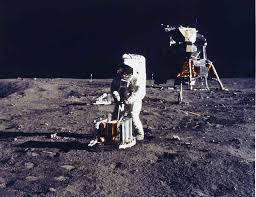 re loss of Chandrayaan - I is not going to thwart ISRO's future moon exploration plans. The space agency reiterated on 29th Sept., that it is going ahead with the even more ambitious Chandrayaan - II, a Rs 425 crore mission in collaboration with Russia. Indian space scientists plan to hoist in Indian into space by 2014, and thence on to lunar soil by around 2020.
re loss of Chandrayaan - I is not going to thwart ISRO's future moon exploration plans. The space agency reiterated on 29th Sept., that it is going ahead with the even more ambitious Chandrayaan - II, a Rs 425 crore mission in collaboration with Russia. Indian space scientists plan to hoist in Indian into space by 2014, and thence on to lunar soil by around 2020.India has completed the design of Chandrayaan - II spacecraft, a project that involves a lander and rover, to pick up samples of lunar soil, analyze, and beam home data on chemical and mineral on the moon The exact spot for the lander-rover to touchdown will be decided using the more than 70,000 images of the moon's surface send by Chandrayaan - I. While ISRO will develop the orbiter, Russia will make the lander and rover.
Monday, August 31, 2009
"An Aspirin aday can bleed stomach away !!"
 Healthy people taking a daily does of aspirin to prevent heart attacks may be doing themselves more harm than good, according t new study by British scientists. Researchers found that the risks of bleeding from taking aspirin were such that its routine use in healthy people "cannot be supported" although they did not dispute its use in patients with a history of vascular problems. They found that taking aspirin had no benefits for people without any symptoms of heart disease and it can can bleeding in stom
Healthy people taking a daily does of aspirin to prevent heart attacks may be doing themselves more harm than good, according t new study by British scientists. Researchers found that the risks of bleeding from taking aspirin were such that its routine use in healthy people "cannot be supported" although they did not dispute its use in patients with a history of vascular problems. They found that taking aspirin had no benefits for people without any symptoms of heart disease and it can can bleeding in stom ach.
ach.The results of the Aspirin for Asymptomatic Atherosclerosis ( AAA) study add to a long-running debate about whether the potential dangers of taking aspirin could outweigh the benefits from reducing the risk of clots. "The finding agree with our current advice that people who do not have symptomatic or diagnosed artery of heart disease should not take aspirin, because the risk of bleeding may out weigh the benefits," said Professor Peter Weissberg, medical director of the British Heart Foundation.
The study involved 3,350 men and women aged 50 to 75 years who had no symptoms of heart disease or history of heart attack. They were given either a daily 100mg dose of aspirin or a placebo ( a dummy pill) and monitored over eight years. While there was no difference in the number of heart attacks or strokes, major bleeding occurred in two percent of the aspirin group compared to just 1.2 percent of the placebo group.
Sunday, August 30, 2009
India's Chandrayaan-I Success!!!
 Yes, India's historical chandrayaan-1 has been success, as per Mr. Nair ( Chief of ISRO) chadrayaan-I is not flap, because it had achieved almost all the scientific and technical objectivies, "From the launch (ON October 22,2008), to reaching the precise orbit (100 km around the moon about about 3,84,000 km from the earth), landing the MIP (Moon Impact Probe), to gathering data, we have crossed all the milestones".
Yes, India's historical chandrayaan-1 has been success, as per Mr. Nair ( Chief of ISRO) chadrayaan-I is not flap, because it had achieved almost all the scientific and technical objectivies, "From the launch (ON October 22,2008), to reaching the precise orbit (100 km around the moon about about 3,84,000 km from the earth), landing the MIP (Moon Impact Probe), to gathering data, we have crossed all the milestones".It was 2 am on Satruday (29th August 2009), Isro chairman Gopalan Madavan Nair was woken up by his his colleagues with a devastating piece of news: India's first mooncraft, Chandrayaan-I. was
lost. The spacecraft's radio contact with the mission command at Deep Space Network at Byalalu, 40 km from the city, scannped at 1.30 am, and efforts to restore it remained futile. Mr. Nair's colleagures plan to make another attempt ot re-establish the communication link on Saturday night. A sense of despair, however, has already set in among space scientists because they are convinced that Chandrayaan-I has met with an early end.

Journey of Chandrayaan-1
- Launched on October 22, 2008
- Its reached precise orbit 100 km around moon.
- 3,84,000 km from the earth
- It was sent 70,000 images of the moon surface.
- Finally, it was abandoned after radio contact with the mooncraft was lost at 1.3, am on Saturday.
- The Deep Space Network at Byalalu received data Chandrayaan-I, which had 11 instruments on board, including six from overseas.
- Significantly, on Aug.21, ISRO and NASA performed a unique joint experiment that could throw light on possibility of ice on the moon.
- The End came just four months after the mooncraft's star sensor for determining orientation of the spacecraft started malfunctioning.
Saturday, August 29, 2009
FIRST ROCKET LAUNCHED BY SOUTH KOREA

The Korea Space Launch Vehicle-1 (KSLV-1) or Naro-1, South Korea's first rocket,is launched from its launch pad at the Naro Space centre in Goheung,485 km (301 miles) south of Seoul, August 25,2009. South Korea on Tuesday launched its first space rocket a move that would be watched warily by reclusive North Korea,after halting last week's countdown minutes before lift-off. The rocket is carrying a satelite which is designed to monitor the earth's radiant energy. The satelite is design
 ed to monitor the Earth's radiant energy.
ed to monitor the Earth's radiant energy.
Thursday, August 27, 2009
REDUCING CARBONDIOXIDE BY FAKE TREES
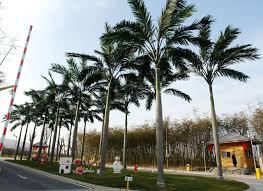
Climate changes is a big issue for all the government the world over and now a British engineers lobby group has suggested that geo-engineering could be used to remove carbon dioxide from the atmosphere. The most cost-effective way of reducing carbon dioxide is the use of machines, or filters. The machines, like trees, capture carbon dioxide from the air. The carbon dioxide is removed from the air and buried underground in the same way as conventional carbon capture and storage.

Artificial blood......Coming soon.......

A team of Australian scientists has genetically modified human embryonic stem cells to glow red when they develop into premature red blood cells.
The breakthrough is seen as the next step in producing artificial blood for human beings.
Dr Andrew Elefanty at Monash university in Melbourne and his colleagues inserted specific genes that code for colour into the DNA of a manufactured stem cell line.
He says the coloured genes, known as reporters, highlight the emergence of certain cell types.
"what we've said to the stem cells is when you're going to turn on the gene for globin we want you to also turn on a red light,"ABC Science quoted Elefanty as saying.
Wednesday, August 26, 2009
IS LAUGHING INJURIOUS TO HEALTH?

A good laugh is considered to be the best medicine,but a new research suggests that it may trigger serious asthma attacks.
this makes laughter a serious matter for 40percent of Australia's 2million asthma suffers, according to new study.
the online poll of 200 suffers, conducted by drug company Astrazeneca's,has backed university research that revealed laughter can spark the chronic respiratory illness in up to half of asthmatics.
A serious concern from this research is, three quarters of asthmatics believe their asthma is well managed but the majortiy put up with lifestyle restrictions because of their illness.
The surey reflected both a University of NSW 2004 study published in the journal of Asthma and a NewYork University 2005 study "Laughter may Trigger Asthma attacks"
Almost two-thirds found themselves breathless when doing housework or shopping, whie half struggled to do their favourite activites.
More than one-third felt tired because of distrubed sleep. And one in five cancelled social engagements because of their asthma.
Concord Hospital thoracic physician Professor Christine Jenkins said well-managed asthma should not hamper the enjoyment of any of life's pleasures.
"Worryingly, these findings show that while many believe they have their asthma under control, the asthma is actually controlling them and their lifestyles, the Daily Telegraph quoted her as saying.
Sunday, August 23, 2009
Human Brain Shrink?

Researchers in the US carried out the study and found that bran regions important for congnition are smaller in obese people, making their brains look up 16 years older than they are. A s brain shrinkage is linked to dementia, the study adds weight to the suspicion that piling onthe pounds may up a person's risk of the brain condition, according to them Moreover, as increased body fat ups the chances of having clogged arteries, that can reduce blood and oxygen flow to brain cells, the resulting reduction in metabolism causes brain cell death and the shrinking seen, the researchers said.
"The brains of overweight people looked 8 years older than the brains of those who were lean, and 16 ears older in obese people, " lead researcher, Mr. Paul Thompson, the Calilfornia University was quoted as saying by the new Scientist. The team has shown that the exercise, which improves blood flow, protects the shrunk brain regions.
Friday, August 21, 2009
Drugs from Spider's Venom
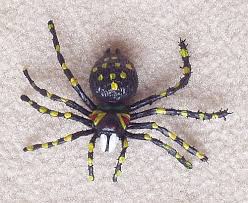 up the development of real drugs for the treatment of erectile dysfuction." A study by resarchers at Johns Hopkins University found that about 18 million men in the US suffer from erectile dysfunction. Worldwide, the number of such males may be quite large.
up the development of real drugs for the treatment of erectile dysfuction." A study by resarchers at Johns Hopkins University found that about 18 million men in the US suffer from erectile dysfunction. Worldwide, the number of such males may be quite large.Kenia Pedrosa Nunes of the Medical College of Georgia, another member of the study team, separated different components of the spider venom and ran tests on rats to seek out the erectile enhancer. Finally he could identify the desired compound. Dubbed TX2.6, the compound turned out to be a relatively short string of amino acids called a peptide. When injected with the peptide, the rats showed enhanced sexual stimulation. It is interesting to note that the Brazilian wandering spiders instead of making nets hide themselves in clothes, shoes and crevices or cracks of furniture etc. kept in a household. When a person tries enhanced a person tries to kill or scare them or accidentally presses them with hands or legs they get infuriated and bite.
In South America too a giant spider, called wolf spider's venom is very deadly. Britten by this spider one might even die. Another spider, named black window, has a shiny
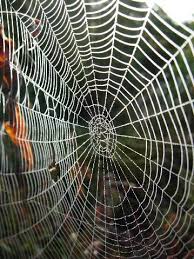 black coat on its body and is found in most parts of North America. It is also highly venomous.
black coat on its body and is found in most parts of North America. It is also highly venomous.It maybe pointed out that in the past too some experiments with spider venom on rats proved to be successful. This has raised the hopes of using spiders' venom for the development of new drugs. It might sound surprising but he spider's venom is even costlier than the snake's venom. In Russia, 1 gram of spider's venom costs between 20 and 30 thousand Roubles; and the venom of some 8000 spiders is required to get 1 gram of the poison. According to scientists, it will be possible in future to develop many useful drugs, vaccines etc. from the spiders' venom
Wednesday, August 19, 2009
Aerogel
In a path-bre
 aking innovation that could have implications in the fields of defence, spae research and electronics, Dr. Sulabha Kulkarni, a professor along with her student, Ms. Supriya Pandhe from the University of Pune's (UoP) Department of Physics has developed an Ultra lightweight aerogel material that can support nearly five lakh time its own weight. The material uses carbon nano tubes(CNTs) and silica. The invention could set a world record, as it is stronger than the material prepared by a researcher at the University of Pennsylvania in February 2007, which could support only 8,000 times its body weight, The invention is a 'quantun leap' in the field of aerogels and has the potential to revolutionise waide-raging applications in space, defence autoobiles, electronics, pharmaceuticals and several other fields.
aking innovation that could have implications in the fields of defence, spae research and electronics, Dr. Sulabha Kulkarni, a professor along with her student, Ms. Supriya Pandhe from the University of Pune's (UoP) Department of Physics has developed an Ultra lightweight aerogel material that can support nearly five lakh time its own weight. The material uses carbon nano tubes(CNTs) and silica. The invention could set a world record, as it is stronger than the material prepared by a researcher at the University of Pennsylvania in February 2007, which could support only 8,000 times its body weight, The invention is a 'quantun leap' in the field of aerogels and has the potential to revolutionise waide-raging applications in space, defence autoobiles, electronics, pharmaceuticals and several other fields.The Department of Science and Technology (DST) has funded Rs.3 crore for period of five years to facilitate research on aerogels at the UoP in collaboratin withthe Banaras Hindu University (BHU), Varanasi. Prof O.ON. Srivastava and his team at the BHU synthesized the CNT, while the aerogel using the CNT was developed by Pune University scientists. Dr. Kulkarni has been working on this project for over six years.
According to Dr. Kulkarni, applications of aerogelsare as wide as in light-weight jackets for armed forces personnel and bridges in defence use, soundproof rooms, heat retaining houses, foundries, packaging and electronic sensors. Called 'Aerogel UoP', the product will now be patented in India s well as internationally, Dr. Kularni has received Material Research Society of India (MRI) Medal for the year 2005, for her work on aerogels.
Dr. Steven Kistler first created aerogel in 1931. The created aerogel in 1931. The first results were silica gels. Aerogel an be made of many different materials; Kistlers' work involve
 d aerogels based mainly on Silica. Carbon aerogels were first developed in the early 1990s.
d aerogels based mainly on Silica. Carbon aerogels were first developed in the early 1990s.Aerogel is low-density solid-state material derived from gel in which the liquid component of the gel has been replaced with gas. The result is an extremely low density solid with several remarkable properties, most notably its effectiveness as an insulator. It is nicknamed frozen smae, solid smoke due to its semi-transparent nature and the way light scatters in the material; however, it feels like polystyrene (styrofoam) to the touch
The first aerogel was 99.8 percent air and was stiff foam make from silicon dioxide and sand. Its density was just 32 mg per cubic centimeter; its melting point was 1,200 degrees Celsius. Today, they are much lighter as well as stronger.
Tuesday, August 18, 2009
CT SCAN AND PET SCAN
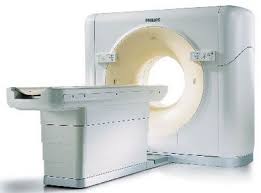
The positron Emission Tomography Scan(PET Scan) and Computerised Tomography Scan (CT Scan) is considered to be a revolutionary, advanced imaging modality that combines two imaging devices resulting in precisely locating cancer within the body.
But many fear the radiation hazards a patient may face, considering the fact that there is substantial radiation exposure to the patient undergoing PET CT (it detects the metabolic activity of the cancer cells in the body). However, if there is a definite indication for getting a PET CT, then its benefits outweigh the risks involved, PET CT is touted to be one of the 'magical' discoveries of the century. Its advantages are many, compared to conventional imaging modalities. However, this doesn't indicate the need for a PET scan.
It is important for doctors ' to keep the health of the patient as the highest priority' (hippocratic Oath). The doctor should remember ' to do no harm' to the patient and must always consider the following questions before investigating a patient.
- Will the investigation make a meaningful difference?
- Will the investigation have apotential to change the treatment plan?
- With specific reference to oncology, will the investigation help in term survival of the patient?
Extending the boundaries of an investigative modality beyond the established indications is in my opinion, unscientific and unethical. For
 example, in the follow up of a patient who has completed treatment for early breast cancer, all that is required, is a regular follow up by the treating clinician and an annual mamogram + (plus) ultrasound scan of the breast. But subjecting the patient ot a chest X ray, abdominal scan, and bone scan on a regular basis does not help.
example, in the follow up of a patient who has completed treatment for early breast cancer, all that is required, is a regular follow up by the treating clinician and an annual mamogram + (plus) ultrasound scan of the breast. But subjecting the patient ot a chest X ray, abdominal scan, and bone scan on a regular basis does not help.There is now ample evidence to suggest that actively looking for an asymptomatic metastasis (metastasis - cancer spreading elsewhere in the body from the primary organ) by ordering a battery of investigations on a regular basis does not improve the long term survival of the patient.
Subjecting the patient to too many tests of unproven indications is unjustified. The public and the profession must be constantly sensitised to the fact that technology has its limitations.
PET CT is a wonderful imaging modality. IT is extremely useful in some situations and helps in guiding treatment decisions. It is however, important to remember that' the patient is supreme' and doctors must be prudent and judicious when ordering diagnostic tests.
COACAINE CONTAMINATION IN BANK NOTES
In what researchers describe as the largest, most comprehensive analysis of cocaine contaminatin in bank notes reporting that cocaine is present in up to 90 per cent of US bank notes
The scientists found traces of cocaine in 95% of the bank notes analysed from Washington D.C. alone. Scientists tested bank notes from more than 30 cities in five countries, including the US, Canada, Brazil, China, and Japan, and found "alarming" evidence of cocaine use in many areas.
The US and Canada had the highest levels, with an average contamination rate of between 85 and 90 percent, while China and Japan had the lowest between 12 and 20 percent contamination. The study is the first report about cocaine contamination in Chinese and Japanese currencies.
Scient
 ists have known for years that paper money can become contaminated with cocaine duing drug deals and directly through drug use such as snorting cocaine through rolled bills. Contamination can spread to bank notes not involved in the illicit drug culture because bills are processed in banks' currency-counting machines.
ists have known for years that paper money can become contaminated with cocaine duing drug deals and directly through drug use such as snorting cocaine through rolled bills. Contamination can spread to bank notes not involved in the illicit drug culture because bills are processed in banks' currency-counting machines."To my surprise, we're finding more and more cocaine in bank notes," said study leader Yuegang Zuo, of the University of Massachusetts in Dartmouth.
Monday, August 17, 2009
VIDEO GAMES
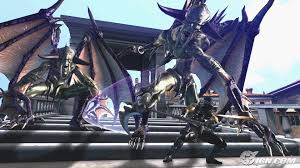
In 2006, Indian gaming companies and Indian subsidiaries of foreign gaming companies established the Indian Games Industry and Trade Association.
Indian gaming companies ae in the process of developing prodcuts that are targeted at both domestic and internaltional markets. Despite the growth and opportunities for development, the Indian gaming industry has to deal with challenges such as scarcity of skilled professional and high provalence of piracy.
The creator of video games did not create after a Eureka moment. Nor did they do it for entertainment. Their aim in 1962 was to show off a new computer the size of a wardrobe On a flickkering cirular screen.
Saturday, August 15, 2009
STONE HENGE
 e of the most famous sites in the world, Stonehenge is composed of earth works surrounding a circular setting of large standing stone and sits at the center of the densest complex of Neolithic and Bronze age monuments en England, including several hundreds burial mounds. Archelogists believed that the iconic stone monument was erected around 2500 BC. However one recent theory has suggested that the first stones were not erected until 2400-2200 BC. The surro
e of the most famous sites in the world, Stonehenge is composed of earth works surrounding a circular setting of large standing stone and sits at the center of the densest complex of Neolithic and Bronze age monuments en England, including several hundreds burial mounds. Archelogists believed that the iconic stone monument was erected around 2500 BC. However one recent theory has suggested that the first stones were not erected until 2400-2200 BC. The surro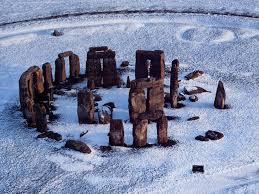 unding circular earth bank and ditch, which constitute the earliest phase of the monument, have been dated to abut 3100 BC. The site and its surrounding were added to the UNESCO's list of World Heritage Sites in 1986 in a co-listing with Avebury Henge Monument, and it is also a legally protected scheduled ancient monument. The surrounding land is owned by New archaeological evidence found by the stone henge river side project indicates that Stonehenge served as a burial ground from its earliest beginnings. The dating of cremated remains found on th
unding circular earth bank and ditch, which constitute the earliest phase of the monument, have been dated to abut 3100 BC. The site and its surrounding were added to the UNESCO's list of World Heritage Sites in 1986 in a co-listing with Avebury Henge Monument, and it is also a legally protected scheduled ancient monument. The surrounding land is owned by New archaeological evidence found by the stone henge river side project indicates that Stonehenge served as a burial ground from its earliest beginnings. The dating of cremated remains found on th e site shows that burials took place there as early as 3000 BC, when the first ditches were being constructed around the monument. Burials continued at Stonehenge for at least another 500 years.
e site shows that burials took place there as early as 3000 BC, when the first ditches were being constructed around the monument. Burials continued at Stonehenge for at least another 500 years.Stonehenge was a place of burial from its beginning to its zenith in the mid third millennium B.C. The cremation burial dating to Stonehenge's sarsen stones phase is likely just one of many from this late period of the monument's use and demonstrates that it was still very much a domain of the dead.
Stone hinge arouse from a rich tradition of equally enignmatic mysteriousstructures. A henge is a cirlcle of stone or wooden uprights. Generally these hinges contain circular banks of the earth paralleled by an internal ditch. Strictly speaking, stone hange is not, its name implies ha henge because th
 e position of its bank and ditch are reveresed. An earth wall about 320 feet in diameter surrounds the monument. Thirty blocks of grey sand stone stood in a circle above the ground about 97 feet in diameter. A contuinuous circle of smaller blocks stood on top of them. Inside the circle was another circle that consisted of about 60 blue stones each weighing about 4 tons. The circle contained about two horse she shaped sets of stones one inside the other opening toward the north east. These blocks called trilithons stand up to 22 feet tall and weigh 30-40 tons. A stone 60 feet high stood 86 yards to the east of stone henge's centre. This stone many have been used in a religious ceremoney to the rising sun or mind summer day.
e position of its bank and ditch are reveresed. An earth wall about 320 feet in diameter surrounds the monument. Thirty blocks of grey sand stone stood in a circle above the ground about 97 feet in diameter. A contuinuous circle of smaller blocks stood on top of them. Inside the circle was another circle that consisted of about 60 blue stones each weighing about 4 tons. The circle contained about two horse she shaped sets of stones one inside the other opening toward the north east. These blocks called trilithons stand up to 22 feet tall and weigh 30-40 tons. A stone 60 feet high stood 86 yards to the east of stone henge's centre. This stone many have been used in a religious ceremoney to the rising sun or mind summer day.In 1950, British archeologists began excavations and proved that monumnent was bui
 lt in 3 main phased from 2800 - 1500 B.C. and famous large ring of stones was built between 1800-1700 B.C. The first certain structural stones of Stonehenge, at the blue stones which were floated, dragged and hauled from Wales, almost likely arrived sometime before 2500 B.C. The giant sarsons followed filling out the monumnent, which was at some point linked by an avenue to river Avon. Stone henge then is the culminatin of dynamic evolution. In and around the hiant henge were two circular timber structures whose footprints survive in traces of their postholes. Two- the northern and southern cirlcles- lay with in the henge itself, while a later
lt in 3 main phased from 2800 - 1500 B.C. and famous large ring of stones was built between 1800-1700 B.C. The first certain structural stones of Stonehenge, at the blue stones which were floated, dragged and hauled from Wales, almost likely arrived sometime before 2500 B.C. The giant sarsons followed filling out the monumnent, which was at some point linked by an avenue to river Avon. Stone henge then is the culminatin of dynamic evolution. In and around the hiant henge were two circular timber structures whose footprints survive in traces of their postholes. Two- the northern and southern cirlcles- lay with in the henge itself, while a later  monumnent known as wood henge stood jut outside. There is evidence to suggest that timber circles were
monumnent known as wood henge stood jut outside. There is evidence to suggest that timber circles weresecretive places, their interiors hidden by screens as well as by multiplication of posts.
In 2002 archeologists working on the east side of Avon, two and half miles south east of stone henge, unearthed two burials dated at between 2500 and 2300 B.C. They contained the remains of the men.
Friday, August 14, 2009
INDOOR PLANTS FOR AIR PURIFICATION
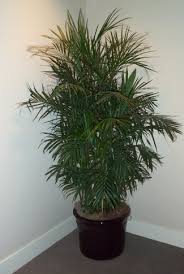 t hand from several indoor ornamental plants that can suck away the harmful elements that contaminate the indoor air.
t hand from several indoor ornamental plants that can suck away the harmful elements that contaminate the indoor air.Signs of Indoor Air Quality Problems
- Unusual and noticeable odours.
- Stale or stuffy air.
- Noticeable lack of air movement
- Dirty or faulty central heating or air conditioning equipment
- Unvented combustion air source for fossil fuel appliances
- Excessive humidity
- Presence of molds and mildew
- Health reaction after remodeling, weatherizing, using new furniture, using household and hobby products, or moving into a new home.

- Feeling noticeably healthier outside.
In the Kitchen:
- Moisture in the kitchen can be a source of mold and odours.
- Gas stoves or ovens release carbon monoxide, nitrogen oxides, and particulates.
- Pressed wood cupboards contain formaldehyde and can cause illness or irritation
- Cleaning products often contain harish chemicals that can be inhaled

- New carpets can be a source of formaldehyde
- Old carpets are a major source of dust,mold and allergens, such as pet dander
- Candles and incense can release lead and volatile organic compounds (VOCs), including particulate matter.
- Moisture and humidity from the shower can lead to mold

- Chemical aerosols from personal care products and air fresheners
- Many potentially harmful cleaning products are kept under the sink
- Car exhaust contains a host of chemicals and gases thatcan get into the house; don't run your car in the garage.
- Leaky gasoline containers can produce intaxicating or nauseating fumes.
- Improper storage of oldpaint cans or pesticides can release toxics and VOCs
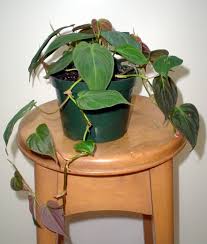
- Chinese Evergreen
- Bamboo Palm
- Spider plant
- Chrysanthemum
- Pat Mum
- good-luck Plant
- Janet Craig

- Marginata
- Mass cane/Corn Plant
- Warkneckii
- Golden Pathos
- Gaebera Daisy
- English Ivy
- BOston fern
- Elephant ear philodendron
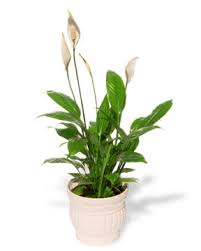
- Heart leaf philodendron
- Heat leaf philodendron
- Mother-in-Law's Tongue
- Peace Lily

Tuesday, August 11, 2009
Newton and the Apple
After dinner, the weather being warm, we went into the garden and drank tea, under the shade of the apple trees, only he and myself. Amidst other discourse, he told me, he was just in the same situation, as when formerly, the notion of gravitation came into his mind. It was occasion by the fal of an apple, always descend perpendicularly to the ground, thought he to him self. Why should ti not go sideways or upwards, but constantly to the earth's centre? Assuredly, the reason is, that the earth draws it. There must be a drawing power in the matter of the earth; and must be in the earth's center not only in any side of th
 e earth. Therefore does this apple fall perpendicularly or towards the centre. If the matter thus draws matter, it must be in proportion of its quantity. Therefore the apple draws the earth as well as the earth draws the apple. That there is a power; like that we here call gravity which extends itself through the universe.
e earth. Therefore does this apple fall perpendicularly or towards the centre. If the matter thus draws matter, it must be in proportion of its quantity. Therefore the apple draws the earth as well as the earth draws the apple. That there is a power; like that we here call gravity which extends itself through the universe.And thus by degrees he began to apply this property of gravitation to the motion of the earth and of the heavenly bodies, to consider their distances, their magnitudes and their periodical revolutions; to find out, that this property conjointly with progressive motion impressed on them at the beginning, perfectly solved their circular courses; kept the planets from falling upon the another or dropping all together into one center; and thus he unfolded and universe. This was the birth of those amazing discoveries, where by he built philosophy on a solid foundation to the astonishment of all Europe.
Monday, August 10, 2009
BATTERIES THAT CHARGE ON AIR
Lithium-ion batteries power most of the mobile devices like laptops,
 cellphones and portable Play Stations. Longevity of the battery is important to keep these devices active while on the move. But, unfortunately lithium-ion batteries are approaching their energy capacity limits.
cellphones and portable Play Stations. Longevity of the battery is important to keep these devices active while on the move. But, unfortunately lithium-ion batteries are approaching their energy capacity limits.This has prompted researchers to start finding alternatives. For instance, researchers at the University of St. Andrews are developing an air-fuelled battery. In this project, University of Strathclyde and University of Newcastle are partners with University of St. Andrews. The research work is funded by the Engineering and Physical Sciences Research Council. This four-year research project, which began in 2007, is scheduled to end in 2011.
What exists and what's next?
Battery is a deiversified field and there exist many types of batteries, each having its own advantages and disadvantages. In the recent ast, Li-ion and Zinc-air batteries have made a mark in the market. Zinc-aire batteries are electrochemical batteries that charge by drawing oxygen from the air. These have high energy density and are inexpensive to manufacture. They are used in experimental electric vehicles and hearing aids. Lithium-ion batteires are very successful, but these find applications in limited areas of consumer electronics. Producing about two billion units per annum, the industry is still growing.
The applications of lithium batteries, however, can be expanded with development of new techniques. To this end, the researches are trying their hands on lithium-air batteries. Lithium-air batteries are showing great results compared to the earlier lithium-ion batteries. As PetterJ.Hall, professor of chemical engineering, University of Strathclyde, explains, "The capacity of Li-air batteries is 10-2- times greater than traditional Li-ion batteries. These will also be considerably cheaper as they contain very little heavy-metal content.
"Since the new batteires use no toxic trasitional metal, these are environment-friendly, although there is a definite economic advantage to recycling the lithium content in them." T
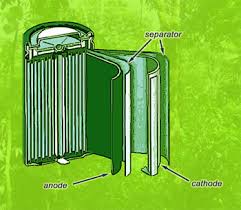 he lithium-air batteries are also going to become lighter, as cathode has been removed from the battery and oxygen from the air is used as tshe cathode.
he lithium-air batteries are also going to become lighter, as cathode has been removed from the battery and oxygen from the air is used as tshe cathode.What drives Li-air batteries?
Arthur Dobley, metal air-battery scientist, SBIR proposal manager, Yardney Technical Products, explains, "Lithium-air, and allow it to ract with the lithium metal anode. These are constructed in layers, like sandwich, of the lithium metal anode, separator with electrolyte and then the air cathode. The air cathode is the critical part, and that is where oxygen enters to cells and reacts."
Given below is an explanation of Li-air batteries construction from Arthur Dobley papers and how Li-air pouch cells are used to test the air cathode. Lithium-air batteries are constructed in layers like a sandwich. For experimental purpose, a pouch cell is used, which contains an air cathode inside the Li-air cells. The cell construction further involves layering of the components and sealing of them in plastic packets. The anode, separator, electrolyte and carbon air cathodes are sealed inside the metallised plastic packets.
The future
So far so good, but what is the future of the Li-air battery which is still under development and where can it find applications? Can this battery suffice all the devices? Lot many questions like these need to answered. Yardney Technical Products inc., a subsidiary of ENTER_TEK International focuses on speciality battery technology for research and product development in high-performance niche markets. Kris Johanessen, directior-business development, Yardney Technical Products, says,"The future of lithium-air is continued development of components such as the anode, electrolyte, separator and especially air cathode. Cell packaging and batteiry design will also be developed. That will depend upon applications which include powering; cellphones, laptops, other electronic devices and even some vehicles. The recharge ability of the cell is the biggest unknown at this time. Further evaluation is necessary to optimise the performance of this promising technology. Efforts to increase the number of cycles available as well as reduce packaging size are on the road map to a viable Li-air system."
Sunday, August 9, 2009
SPREADING OF SWINE FLU
Swine flu is a type A influenza virus that causes respiratory illness in pigs. People do not normally get swine flu, but human infections can and do happen. What is particularly worrying about the current swine flue injecting pigs and humans is that the H1N1 virus is a genetic mix of swine, human and avian flue strains, a dangerous combination that could elude traditional drug treatments.
The threat of zoonosis, where a disease jumps from animals to humans like HIV, Anthrax, Bird flu, and in thee most instance Swine flu, is growing rapidly. Zoonosis is a category of infectious diseases where the pathogen is able to cross the species barrier from wild or domestic animals to humans. A major factor contributing to the appearance of new zoonotic pathogens in human populations is increased contact between humans and wildlife. This can be cause either by human encroachment in wild areas or by movement of wild animals into areas of human habitations causes due to environmental disturbances.
If environmental disturbances are the reasons for new zoonotic diseases, then it may be possible to predict to some extent the geographical areas of the world where new zoonotic pathogens might jump over the infect humans. This kind of study will allow medical experts toi study the new disease before it spreads to new and more populated areas.
Preventing Zoonotic Diseases:
1. Strictly avoid undercooked/raw meat, unpasteurized dairy products and unwashed vegetables.
2. Limit travel to areas where a new pathogen has been found.
3. Increase farm hygiene.
4. Clean and disinfect transport cages, feed trays and any equipment after each use.
5. Observe domestic animals daily for clinical signs of disease(s) and report abnormalities to help in early veterinary investigation.
6. Immediately move highly endangered or susceptible species to the most secure facilities available within the zoo and keep in isolation.
7. Dispose carcasses to minimize transmission of pathogens to humans or other animals within the vicinity.
8. Decontaminate/disinfect highly susceptible areas.
9. Vaccinate poultry and farm workers compulsorily.
10. Reduce contact between livestock and wild birds.
11. Make available vaterinary vaccines.
12. Ban bush meat and exotic pet trade.
13. Conduct public awareness programmes.
Friday, August 7, 2009
TECHNOLOGY UPDATES

Solar-powered, waterproof mobile phone:
NTT DoCoMo has developed a solar-powered, water-proof mobile phone called Solar Hybrid (DoCoMo STYLE series SH-08A). The Solar Hybrid can be recharged with sunlight as well as electricity. Even if the battery has completely lost ist charge, just 10 minutes of solar recharging via a panel on the phone' s body provides approximately one minute of talk time
The handset comes with an 8 megapixel CCD camera, and fits waterproof body is resistant to water sprays from all directions and submersible to depths up to one met
Bacterial computers:
Researchers in the US have developed bacterial computers that can revolutionise genetic resea
 rch. The research team, including scientists from Missouri Western State University and Davidson College in North Carolina, USA, engineered the DNA of Escherichia coli bacteria and created bacterial computers capable of solving a classic mathematical problem known as the Hamiltonian Path problem.
rch. The research team, including scientists from Missouri Western State University and Davidson College in North Carolina, USA, engineered the DNA of Escherichia coli bacteria and created bacterial computers capable of solving a classic mathematical problem known as the Hamiltonian Path problem.The Hamiltonian Path problem asks whether there is a route in network from a beginning node to an ending node, visiting each node exactly once. The researchers modified the genetic circuitry of the bacteria to enable them to find a Haliltonian path in a three node graph. Bacteria that successfully solved the problem reported their success by fluorescing both red and green, resulting in yellow colonies.
Mini projector for phones:
Researchers at the Fraunhofer Institute for Applied Optics have developed a
 mini projector that promises to cut down on the flab and the large power requirements of existing phone projection technologies. The new system uses a lens system to project light and images generated by a low-power organic light-emitting diode (OLED). Use of the OLED means there is no need for a separate light source and the lens system ensures decent image reproduction.
mini projector that promises to cut down on the flab and the large power requirements of existing phone projection technologies. The new system uses a lens system to project light and images generated by a low-power organic light-emitting diode (OLED). Use of the OLED means there is no need for a separate light source and the lens system ensures decent image reproduction.
